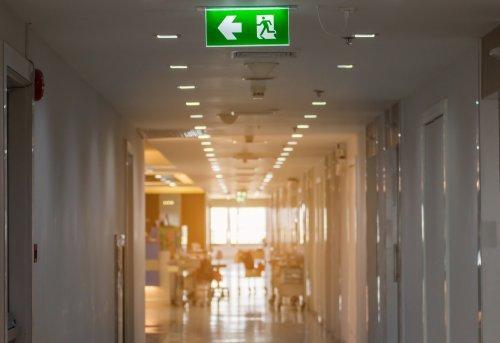Fire safety compliance and COVID-19. How can the Salamander fire door system protect patients in the event of a fire?

Breaking News:
Das MIFCOM-Versprechen: handgefertigte PCs 30 Tage lang testen
Neue Spendenaktion der VEM fördert Frieden und Gerechtigkeit in Afrika, Asien und Deutschland
Gesundheitsschuhe gibt es auch in attraktiv: Der MBT Store versorgt Füße mit Wohlbefinden
TU Ilmenau entwickelt neue Materialien für nachhaltige Atemschutzmasken
Kathmandu Nepal
Freitag, Apr 19, 2024

Emergency hospital evacuations are inherently more complicated when compared to other public buildings. Alike most aspects of modern life, the pandemic has made this process more difficult, with the requirements of social distancing and the prevention of infection a vital consideration. Mobility issues and the vulnerable nature of patients, combined with expensive and often life dependent equipment requires substantial assistance from staff in the event of a fire, slowing the procedure down and risking lives in the process.
A fire evacuation in the accident and emergency unit at the Royal Stoke University Hospital in 2017 saw patients on higher levels waiting for lifts for up to an hour while the fire alarm sounded. As many of the patients were unable to walk, staff attempted to transport them on beds and mattresses, causing a grid lock in the hospital corridors and the subsequent delays [2] [3]. Furthermore as smoke from the fire spread throughout the building, patients had to be redirected to neighbouring hospitals as the A&E unit and surrounding wards were closed and ventilated. The limited capacity in hospitals across the UK today would make an incident like this catastrophic, with patients left with nowhere to go.
COVID-19 has seen a change to day-to-day behaviours which may directly intensify the risk of a fire in a hospital. The increased use of ventilators was raised as a heightened fire risk by the NHS England estates team in March last year, with higher oxygen levels within wards allowing a potential fire to spread at a faster rate [4]. The need to reduce touch points and prevent contact with door handles has resulted in many high traffic fire doors being held open. Fire doors are essential to provide protection to a building and its occupants, preventing smoke and flames spreading from room to room in the event of a fire.
Geofire, manufacturer of the Salamander fire door system said, “As an official supplier to one the largest hospital trusts in the UK, we want to stress to Fire Safety Officers across the country the importance of not letting fire safety standards slip. Our approved radio controlled, Salamander devices are battery operated and connect wirelessly to a mains-powered controller unit, which is easily wired into existing fire alarm systems, ensuring that fire doors will safely close in the event of a fault or fire.
The Salamander system has all the benefits of hard-wired electromagnetic door holders and closers, but as the devices are wire-free, they are quick and easy to install, saving time, installation costs and require no disruption to a building’s fabric or its occupants”.
Holding open a fire door with a non-compliant device not only threatens prosecution, fines and closures following failed inspections, but puts patients, staff, equipment and the building at risk. Salamander offers the only wire-free system of radio controlled fire door holders and closers which complies with Category A of BS 7273-4.
To find out more about the Salamander range and find an approved installer near you, visit www.geofire.co.uk/…
Sources:
[1] The growing maintenance backlog across the NHS estate | National Health Executive
[2] Patients evacuated in beds during fire at Royal Stoke Hospital – BBC News
[3] Hospital patients ‚trapped for an hour‘ during fire evacuation as corridors ‚blocked by bed gridlock‘ – Mirror Online
[4] Hospitals warned of increased fire risk on covid-19 wards | News | Health Service Journal (hsj.co.uk)
Geofire, home of Agrippa and Salamander, began life in 1972 and has, since then, been designing and manufacturing a wide range of electromagnetic activation devices, including fire door holders and closers. The Agrippa wire-free, fire door holders and closers offer an alternative, battery-powered solution. The devices ‚listen and learn‘ the sound of the fire alarm, closing the door upon hearing the pre-recorded sound of the alarm.
Geofire – Fire Industry Association – FIA
11 Glasshouse Street, St Peter’s
NE6 1BS Newcastle upon Tyne
Telefon: +44 (1388) 770360
http://www.geofire.co.uk
![]()